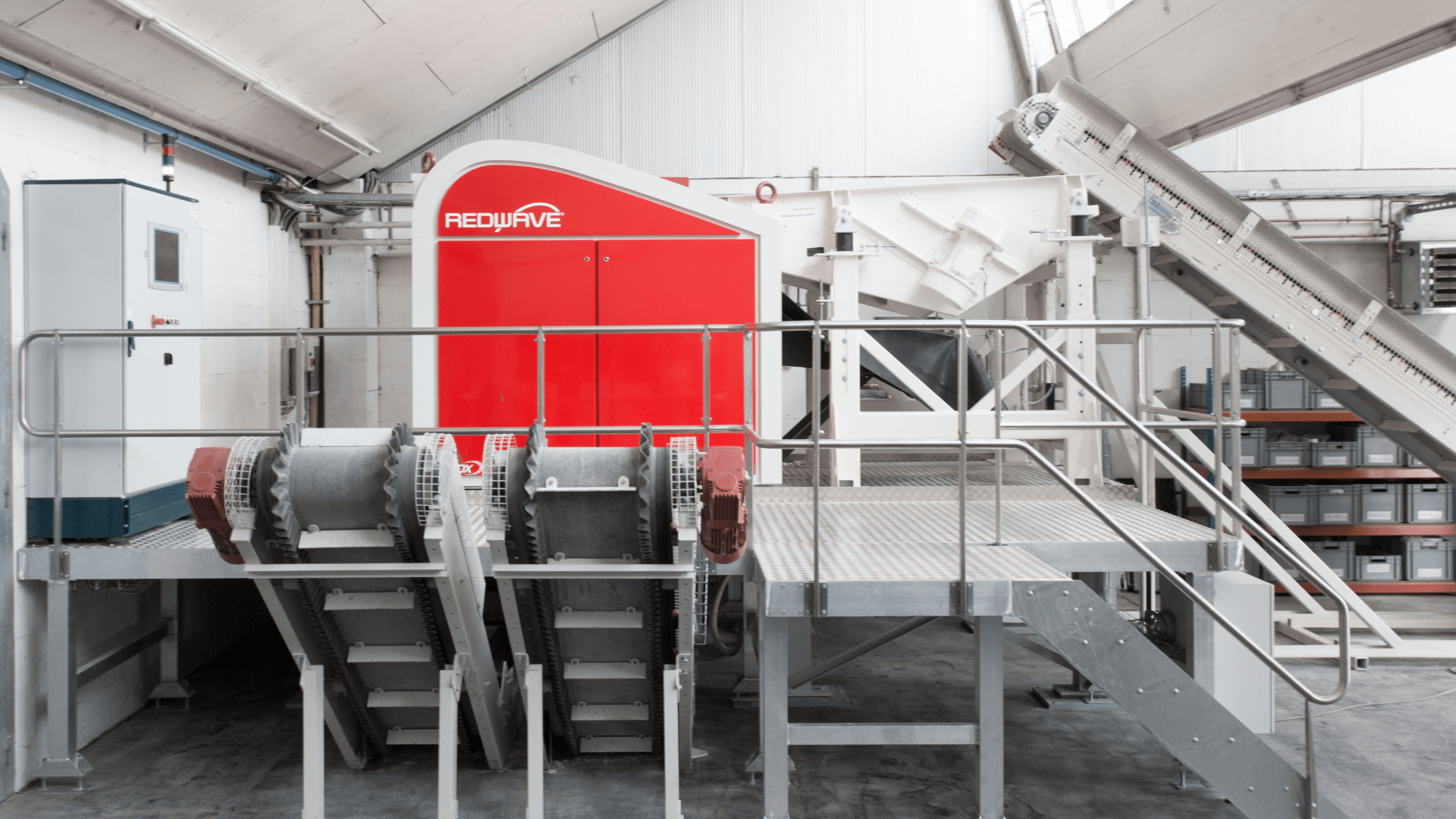Global M&A markets didn’t deliver the full-throttle comeback that many dealmakers had hoped for in 2024. Although performance improved (in some regions, significantly), global dealmaking was curbed by a variety of pressures and delivered moderate returns, with deal value up 12 percent to $3.4 trillion. While challenges facing dealmakers have evolved—some have dissipated, while new ones have sprung up—they remain formidable. Nonetheless, significant tailwinds are at play too. Taken together, we anticipate that a strong upward pull will eventually swing the balance toward improved, and possibly sharply improved, global M&A returns in 2025.
On the surface, it may appear difficult to remain sanguine after anticipating a full market resurgence for several years. But many of the dynamics that stymied dealmaking for the past three years, including some that limited 2024 global deal value and volume to roughly the average of the past 20 years, are receding. If this pattern continues, then M&A markets could shift dramatically in the next six to 12 months, especially as the year progresses.
Could fresh geopolitical, trade, or other policy hurdles challenge this picture? Certainly—like an unseasonable frost landing on a green shoot. But if history is any guide, logic should eventually prevail.
Not all dealmakers would benefit equally. Regions, sectors, and even subsectors are likely to experience market forces quite differently. Similarly, players that are already adapting M&A strategies to the new conditions are also most likely to thrive, with M&A markets fragmenting as the year progresses and consigning dealmakers into two camps: the big winners and everyone else. In addition to benefiting from certain geographic or sector advantages, dealmakers that prevail will have a vision of their strategy in sharp relief, a clear understanding of the roles of transactions and organic growth, and the distinct internal capabilities needed to pursue M&A effectively throughout the deal cycle, from sourcing and due diligence to synergy capture and portfolio rationalization.
Although a thicket of opposing forces is sure to play out in the global M&A landscape, complicating dealmaker decisions, a variety of compelling factors make it reasonable to construct an optimistic—perhaps even bullish—case for 2025.
First, macroeconomic conditions are more favorable than in previous years. On a global basis, economies have proved durable. The much-feared global recession didn’t materialize, employment rates have been solid, the cost of capital has declined as restrictive monetary policies have eased, and valuations are normalizing, even in regions such as the United States, where a roaring stock market delivered a 23 percent increase in the S&P 500 last year. (The torrid climb delivered 57 record closes, and the US stock market now commands more than 60 percent of global stock market capitalization.)
In addition, corporations in the market for deals generally have strong balance sheets and cash positions (by some estimates, some $7.5 trillion in cash is languishing on nonfinancial balance sheets). There’s also plenty of pent-up demand. Many companies that emphasized organic initiatives during the COVID-19 pandemic are now looking for new avenues of growth and have compelling strategic and structural reasons to leap.
For example, in industries such as banking, life sciences, oil and gas, and technology, as well as advanced industries, companies need to adjust their portfolios to capture innovations and new capabilities now essential for growth. In other industries, companies are eyeing dealmaking to assemble leadership platforms that will help them compete as business demands evolve. And always, across industries, the most successful dealmakers pursue M&A programmatically by making multiple small or medium-size acquisitions each year as part of their growth strategy. The practice allows them to outperform peers and deliver median excess TSR of 2.3 percent per annum. The approach, which includes divesting nonstrategic businesses, remains the highest performing and the least risky of the M&A program types.
Moreover, following a year in which almost half of the world’s population was able to vote in national elections, political transitions in some countries are likely to trigger regulatory changes that will affect a variety of industries. For example, in the United States, rulings about the energy sector in recent years favoring green technologies are expected to sharply reverse in favor of fossil fuels. The US financial sector, too, could see regulations relaxed on capital requirements, consumer protections, and anti-money-laundering rules. European elections have nudged the European Parliament to the right, and three major EU sustainability regulations, long a source of business community vexation, are set to be revamped. And across many regions, the technology industry’s gathering power is already boosting scrutiny, if not new regulation.
Shifts in national politics and international alliances are also upending operations in some countries. China, for example, now views India as a rising competitor as Western businesses look to derisk their supply chains through direct investment or M&A.
All these developments add powerful incentives to shift the focus of strategies and investment in the times ahead, making transactions a critical tool for adapting to new requirements quickly.
One of the most compelling forces that could boost M&A in 2025 involves private equity (PE). Financial investors, which historically served as a huge engine to power M&A, have a substantial incentive to stir from their relative torpor of recent years. Dry powder has reached extraordinary levels (estimated at more than $2 trillion globally). Meanwhile, exits beckon as investors look for ROI vintages that have remained bottled up far longer than anyone anticipated. For example, average exit hold times reached an all-time high of 8.5 years in 2024—more than double the 4.1 years seen in 2007.
Although sponsor-led contributions to M&A volume are beginning to match or even exceed historical levels, their current contributions are considerably lower than those seen in the M&A highwater year of 2021, suggesting that there’s still room for growth. For example, PE’s contribution to M&A volume in the Americas in 2024 stood at $398 billion (22 percent of M&A activity), down from $865 billion (28 percent of activity) in 2021. Similarly, PE’s contributions in Europe, the Middle East, and Africa (EMEA) in 2024 stood at $243 billion (29 percent of M&A activity), down from $483 billion (32 percent of activity) in 2021. In the Asia–Pacific (APAC) region in 2024, PE’s contributions stood at $126 billion (16 percent of M&A activity), down from $279 billion (21 percent of activity) in 2021.
Equally, the growth in the private-investment industry itself could also encourage PE to come roaring back. For example, in the United States, assets in private funds thrived on low interest rates and stock market highs from 2020 to 2023 and, by some estimates, grew 34 percent (to $28 trillion) during that period. That amount nearly matches the money in public mutual funds, exchange-traded funds, and closed-end funds. During the same time, the number of funds multiplied rapidly to more than 100,000, from just over 63,000, an increase of nearly 60 percent. Such fecundity sets the stage for yet more dealmaking.
Of course, the challenges mentioned previously remain part of the vista for 2025, although the length of the associated shadows is unknown. Perhaps not surprisingly, some of the biggest curbs on M&A market ebullience aren’t macroeconomic or even strategic in nature but are more directly human made. Geopolitical instability and changes in trade policies, along with decisions of central bankers and regulators, are some of the most obvious currents that could influence economic growth and M&A activity in the year ahead. In a McKinsey Global Survey of nearly 1,000 executives representing 86 nations and a range of industries, 35 percent of respondents called geopolitical instability the greatest risk to domestic growth, with concerns about trade policies a close second.
The view of trade as a potentially disruptive force domestically is a dramatic shift from surveys in recent years. It worries executives, especially those in North America (most cited risk, chosen by 56 percent of respondents), APAC (29 percent), and Europe (28 percent) (Exhibit 1). In addition to fueling economic concerns, including effects on inflation and interest rates, the threat of tariffs could further complicate dealmaking, rendering the delicate art of valuing assets even trickier.

For business executives—and for dealmakers, too—there appears no greater profanity than chaos or uncertainty.
Another potential drag on M&A in the year ahead involves regulatory scrutiny. While regulatory shifts in APAC and EMEA aren’t expected to greatly affect the level of M&A activity in these regions, new US regulatory requirements will require more comprehensive disclosures and far greater transparency, adding as many as 121 hours to the preparation of filings for complex deals. The provisions are aimed at more aggressive antitrust enforcement and necessitate providing information up front that agencies would normally only receive after opening a preliminary investigation. Even if these new regulations were eventually relaxed, any change would likely be protracted—encumbered by the need to unwind a thicket of procedural rules.
In anticipating how these and other developments will influence trends in M&A in the year ahead, there’s still much to learn from the global market’s recent performance.
For all of 2024, the global value of deals over $25 million rose 12 percent (to $3.4 trillion, from $3.1 trillion in 2023) as the number of companies changing hands increased 8 percent (to 7,784, from 7,206 in 2023) (Exhibit 2). Average global deal value rose 4 percent (to $443 million from $424 million in 2023) as macroeconomic conditions improved and as dealmakers—toughened by repeated rounds of volatility—grew more inured to geopolitical tensions and political transitions.

Still, external forces in 2024 stoked waves of caution among dealmakers. Megadeals (those over $10 billion) declined 6 percent over the year (to $664 billion, from $703 billion), and the average size of large deals fell to $18.4 billion, from $20.1 billion. Megadeals’ contribution to activity fell to 19 percent in 2024, from 23 percent in 2023, and was well shy of the contribution of behemoth deals seen before the COVID-19 pandemic. Midsize deals (those between $1 billion and $10 billion) remained most popular among dealmakers, accounting for 46 percent of global activity in 2024, up from 41 percent in 2023.
Corporate dealmakers accounted for most 2024 transactions around the world (78 percent, down from 81 percent in 2023) as financial investors, lured by lower interest rates, moderating valuations, and investor demand for the return of capital, began to reemerge.
Three sectors remained the busiest for dealmakers, in line with previous years. Global energy and materials; technology, media, and telecom; and financial services accounted for nearly 60 percent of the value of companies changing hands.
In 2024, major regions each experienced a different M&A marketplace—a pattern we expect to continue in 2025.
The Americas
In the Americas, which generally account for just over half of global M&A market value, dealmaking activity in 2024 returned to the level seen before the COVID-19 pandemic. With economic growth in the United States increasing almost twice as fast as in other economies, the value of deals worth over $25 million in the Americas grew 12 percent (to $1.8 trillion, from $1.6 trillion in 2023) (Exhibit 3). Deal volume increased 9 percent (to 2,763 deals, from 2,524 in 2023). Average deal size grew to $648 million in 2024, from $631 million in 2023.

Dealmakers reveled, after years of economic turmoil and uncertainty, in what was arguably the most stable economy since the start of the pandemic. With characteristic exuberance, dealmakers in the Americas closed 14 of the world’s 20 largest deals in 2024. At the same time, companies in the Americas attracted the most interest globally, with 15 of the 20 largest deals involving targets based there. With strong corporate profits, cooling inflation, a normalizing labor market, relatively low household debt, rebounding consumer sentiment, strong productivity (boosted further by momentum with AI), and two more interest rate cuts planned at the time of this writing, the economic outlook in the Americas looks positive, save for uncertainty around the new US administration’s policies.
While reduced regulation could lift US profits and productivity, policy changes affecting immigration, tariffs, and taxes could lead to higher prices and bigger deficits. They could result in slower or faster growth, depending on which of the sweeping proposals are implemented. The US Federal Reserve expects the economy to grow at 2.1 percent this year, down from GDP growth of 2.5 percent in 2024. But stocks soared immediately after the US election in November, suggesting that many investors were betting that the new administration would avoid disruptive policies—a stance that would create ballast for M&A.
A variety of reports at the end of 2024 reported rising confidence among US CEOs. And history would suggest that this optimism isn’t unfounded: Over the past 40 years, annual US merger volume has increased by an average of 101 percent in second-term presidencies, reflecting greater insight into the fiscal, tax, regulatory, and foreign policies that affect boardroom decisions. CEOs hope that this pattern will hold in nonconsecutive presidencies as well.
EMEA
Unlike our M&A clients in the Americas, which were often pursuing growth and new capabilities, our clients in Europe, responding to dimmer economic prospects, spent much of 2024 looking for greater resilience through transactions that could boost scale, efficiency, or exposure to the US market. Although the European Union reined in inflation after it peaked at 10 percent in late 2022, other risks remain on the upswing, as geopolitical tensions remain inflamed and as the bloc’s two largest economies—Germany and France—face fresh political turmoil. Then too, EU uncertainty around policies of a major trade partner has escalated since the US election. The chance of tariffs and a trade war would damage Europe’s manufacturing base, including its troubled car industry.
Lawmakers, economists, and other policy officials continue to fret about the eurozone’s waning competitiveness and its economy losing momentum, but so far, the antidotes are unclear. Growth in the eurozone is expected to land at about 1 percent for the year, down from earlier forecasts.
Even with these pressures, the value of deals over $25 million in EMEA jumped 15 percent in 2024 (to $845 million, from $733 million in 2023) as companies continued active dealmaking despite a sluggish economy (Exhibit 4). Additionally, PE firms began to reinvest, accounting for 29 percent of M&A value in the region, up from 25 percent a year earlier.

Average deal value also rose 8 percent in EMEA in 2024 (to $413 million, from $384 million in 2023). The number of announced deals increased 7 percent in 2024 (to 2,044, from 1,910 in 2023). However, even with year-over-year improvement in M&A market results, 2024 deal value trailed the 20-year average by 18 percent. Similarly, the number of companies changing hands lagged the 20-year average by 13 percent in another apparent sign of atrophy in the region. In contrast, average deal value and volume for the Americas and APAC in 2024 aligned closely with their 20-year averages.
APAC
Overall deal value in the APAC region rose 10 percent in 2024 (to $797 billion, from $728 billion in 2023) but remained below prepandemic levels (Exhibit 5). The relatively small uptick obscures some of the fundamental shifts underway. Activity, including domestic and inbound deals, in Greater China has fallen by about 45 percent since 2020, for example. Australia and New Zealand had the largest inflows in 2024, driven mostly by a few large mining deals. Japan and Korea saw net capital outflows in dealmaking in 2024.

India was the only major geography to see a decline in overall M&A activity in 2024, down about 16 percent from 2023, even though more Indian companies are now looking at M&A—and global ambitions—with stronger balance sheets, more talent, and less debt than peers in other countries.
We’re cautiously optimistic about an uptick in APAC deal volume in 2025. Uncertainty remains high in China–US relations, especially given the potential for tariffs, which is driving more enterprises and investors to broaden their footprints and portfolios by making deals elsewhere in APAC.
In China, many deals are driven not by markets but by government directives, including the need to consolidate in sectors with overcapacity and to create more competitive entities in financial services and other sectors. Acquirers and investors overseas, especially in Japan, the Middle East, and the United States, are taking a keen interest in Indian firms—a trend that’s likely to continue on the subcontinent with its robust economic growth, increasingly strong manufacturing sector and supplier base, climbing quality of products, expanding engineering talent, and rising consumer spending.
Meanwhile, valuations have risen for companies in Japan, buoyed by more favorable regulations and government stimulus than those seen for companies in peer countries. Japanese companies will continue to seek growth opportunities abroad, while PE firms scan Japan for promising targets.
For both serial acquirers and companies looking to resume dealmaking after a hiatus of several years, the most effective M&A practices are impervious to market cycles. Top dealmakers have been sharpening their tactics and sophistication at each step of the deal cycle. Whether M&A markets are strong in 2025 or linger under a cloud of uncertainty in some regions, some sectors, or globally, dealmakers can pursue practical steps to advance their state of play—no matter their starting position.
Given the amount of capital flowing through M&A—some $3.4 trillion in 2024—and the decades of research showing that programmatic acquirers create more value than peers, investing in M&A capabilities makes sense. Each transaction should work better than the previous one, just as approaches in each part of the deal cycle should advance as companies gain experience. The following practices, along with others described in this report, can help dealmakers boost M&A capabilities quickly.
Reduce exposure to global risks
With talk of geopolitical conflicts and trade wars in the air, the use of M&A can help companies temper global risks while focusing on value creation. Steps that can build resilience include assessing supply chain vulnerabilities, exploring alternative sources, and anticipating shifts in both demand and market opportunities.
Add AI to deal origination tactics
Top dealmakers are eschewing traditional target lists in favor of richer sourcing augmented by AI. Through advanced data analysis and predictive modeling, AI can accelerate and expand searches to surface not just peers in adjacencies but less-visible candidates, such as businesses tucked into larger organizations and those competing in a broader ecosystem. For example, McKinsey’s deal-scanning tool uses proprietary databases and semantic understanding to assess and prioritize targets. Gen AI can also scan public and private databases, monitor macroeconomic conditions, benchmark performance, provide projections, and identify priorities and risks to manage immediately after deal signing.
Expand focus to include smaller deals
Thinking beyond large and medium-size deals can yield benefits. Especially in uncertain environments, smaller deals can temper transaction risks and accelerate the pace of acquisitions, allowing companies to test deal theses and board conviction while building muscle in critical M&A skills.
Create a diligence advantage
With the days of “free money” long gone, capturing full value from transactions remains as important as ever. Seasoned dealmakers are doubling down on diligence activities and using this phase to stress-test value creation drivers of investment theses, integration must-haves (such as IT compatibility and regulatory compliance), and new requirements (such as supply chain resilience, inflation pass-through strategies, and compliance with environmental, social, and governance policies). Once again, new AI capabilities can be helpful here, in addition to expediting a variety of legal tasks involved in deal negotiations, signing, and closing.
Capture full synergies
Few companies cast a wide enough net in pursuing synergies. Indeed, many focus on cost synergies to the exclusion of others, often overlooking valuable sources such as revenue and combinational synergies. In addition, some either proceed with faulty assumptions or improper validation or fail to reset synergy targets after closing, when scores of managers can get a closer look at new data and key functions.
Sharpen integration approaches
Integrations are notoriously demanding, requiring speed, care, and a Solomon-like focus balanced among integration priorities and business continuity. Rather than relegating this work to back-office domains, top dealmakers are elevating their approach. They deploy AI to create more space for nuanced problem-solving, for example, by automating key tasks or training integration leaders and their teams on M&A best practices and the organization’s specific playbook. Top dealmakers are also sharpening integration blueprints to define the depth and pace of integration for individual functions and to ensure that deal rationale and value creation objectives are tightly linked to execution plans. Such blueprints are an important grounding mechanism. They allow acquirers to enlist far larger teams (from dozens to hundreds of managers) in integration activities, supporting both sound decision-making and buy-in for change. With a similar focus on precision, many dealmakers are tailoring more imaginative menus of incentives to retain critical talent during the integration and longer term.
Use transactions to forge transformations
Few events can catalyze transformations as effectively as major deals can. While transactions can succeed on any number of dimensions—for example, by delivering gains in capabilities, synergies, or talent or by improving supply chains, distribution, customer segments, or geographic reach—a transaction can play a distinctive role in launching a broad transformation. In 2025, many dealmakers are likely to have an opportunity to create platform deals that can reshape market structures and reorder entire industries, as well as shuffle leadership positions.
To help navigate the complexities of the global M&A environment in 2025, this report provides in-depth discussions on trends and best practices. We offer perspectives on some of the critical issues likely to influence performance in a variety of sectors, as well as insights on issues of central importance to M&A leaders.




